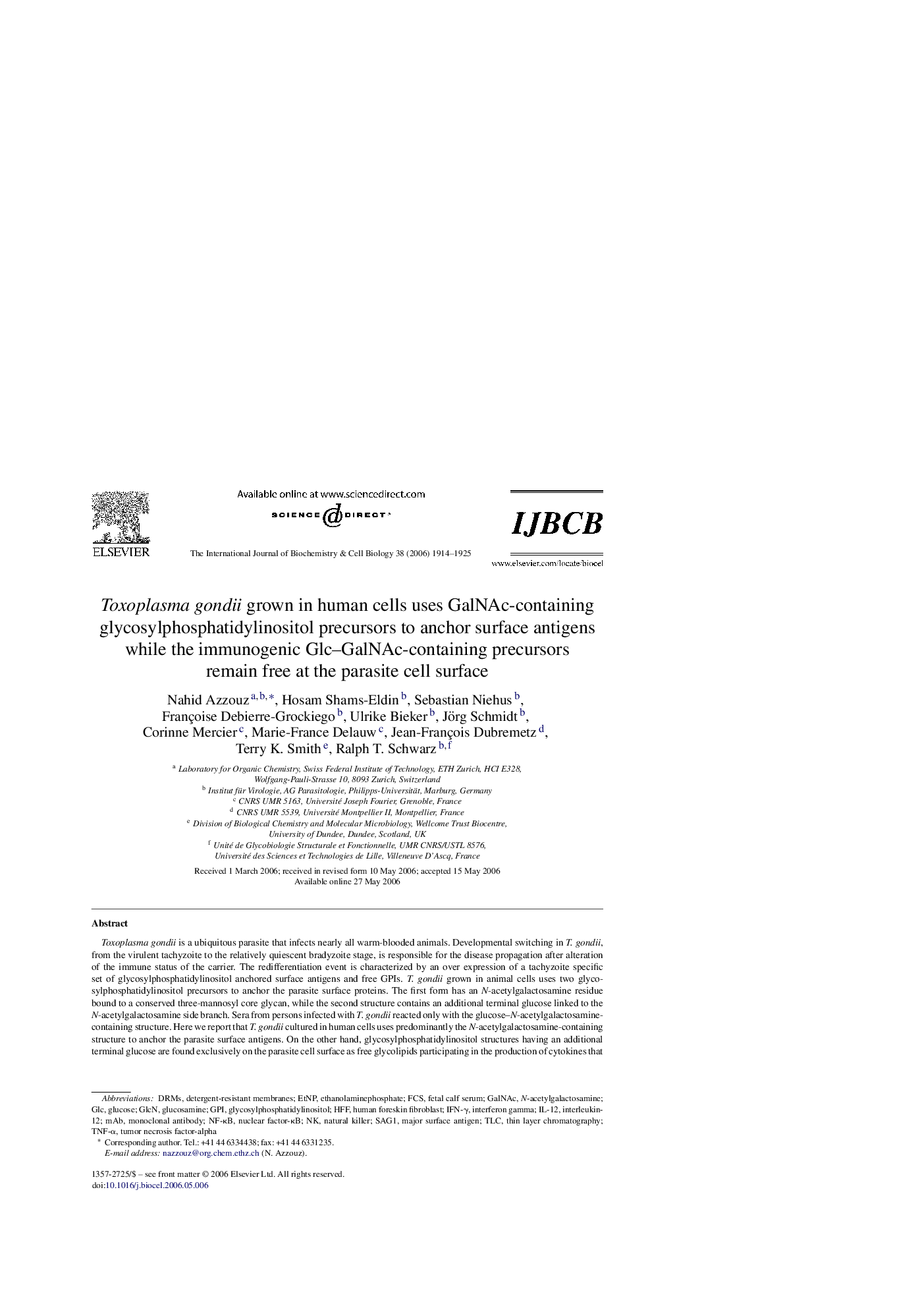| Article ID | Journal | Published Year | Pages | File Type |
|---|---|---|---|---|
| 1984358 | The International Journal of Biochemistry & Cell Biology | 2006 | 12 Pages |
Toxoplasma gondii is a ubiquitous parasite that infects nearly all warm-blooded animals. Developmental switching in T. gondii, from the virulent tachyzoite to the relatively quiescent bradyzoite stage, is responsible for the disease propagation after alteration of the immune status of the carrier. The redifferentiation event is characterized by an over expression of a tachyzoite specific set of glycosylphosphatidylinositol anchored surface antigens and free GPIs. T. gondii grown in animal cells uses two glycosylphosphatidylinositol precursors to anchor the parasite surface proteins. The first form has an N-acetylgalactosamine residue bound to a conserved three-mannosyl core glycan, while the second structure contains an additional terminal glucose linked to the N-acetylgalactosamine side branch. Sera from persons infected with T. gondii reacted only with the glucose–N-acetylgalactosamine-containing structure. Here we report that T. gondii cultured in human cells uses predominantly the N-acetylgalactosamine-containing structure to anchor the parasite surface antigens. On the other hand, glycosylphosphatidylinositol structures having an additional terminal glucose are found exclusively on the parasite cell surface as free glycolipids participating in the production of cytokines that are implicated in the pathogenesis of T. gondii. We also provide evidence that such free glycosylphosphatidylinositols are restricted mainly to the lipid microdomains in the parasite cell surface membrane and mostly associated with proteins involved in the parasite motility as well as invasion of the host cell.
